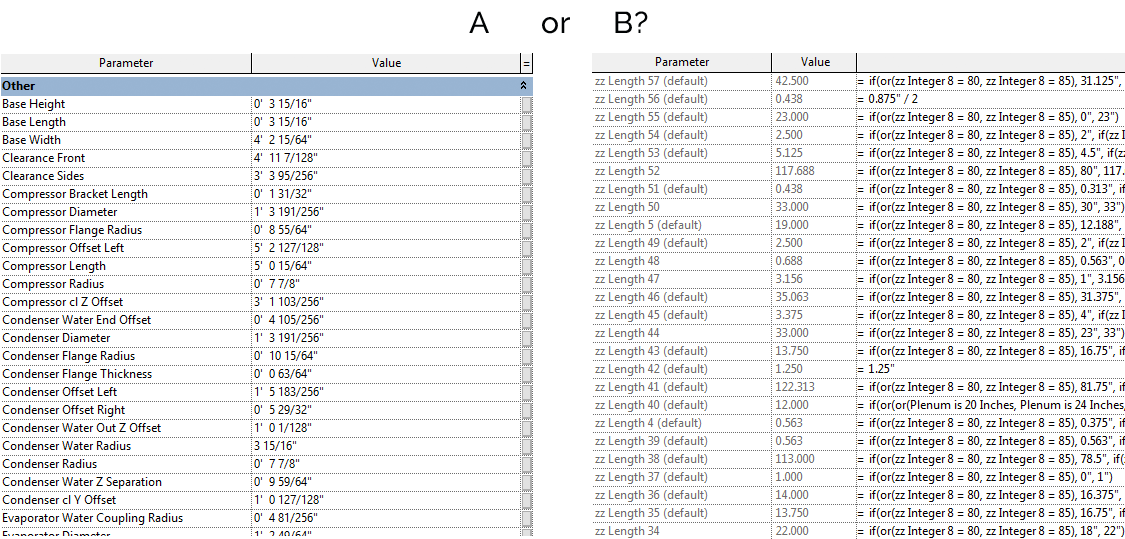
After my last post on building manufacturer Revit content that can easily flex to accomodate new dimensions and specs, we received a customer request that offers up a perfect study in contrasts. The customer in question is a manufacturer with existing Revit families that had been made by some other provider (unknown to us) and later published on Seek. The manufacturer now wanted to add a few new types to those families, each of which had only minor changes to dimensions and electrical specifications. Sounds simple enough, right?
When we actually opened the families in Revit and took a look at the parameters, what had seemed like a quick and easy job revealed itself to be a nightmarish labyrinth. All of the type parameters were controlled by lengthy IF formulas that referenced a slew of opaquely named parameters. The below images are just a portion of the parameters that drove the type data for these families.



How do you update Revit content like this? Well, you could spend hours picking apart the formulas and tracing the parameter references to hopefully figure out the “simple” update that’s needed to add a new voltage value or stretch an outer dimension by a few inches. Of course there’s always the possibility that you miss a step the first time or that your mind goes numb before you can get to the end of the maze. And even if you do manage to decipher how to add your new type values, you better re-check all of the other types afterward to make sure you didn’t accidentally affect any existing data.
It’s possible that whoever originally created the content has some tool or spreadsheet that they’ve configured to easily add new type values and generate all the correct parameters and formulas. But it’s truly a disservice to the customer to build content that they can’t maintain independently (either directly on their own or by working with any reputable Revit content provider). This is especially true when there is an existing, standard tool called a type catalog that can make the same process as easy as modifying or adding a row in a spreadsheet.
So what can you say to a customer who brings you families like this with the expectation of quick and easy updates? In this case, we knew that trying to update the existing Revit families would take us just as much time (and with no added value) as it would to rebuild the families from scratch. So we told the customer that they had two options — 1) go back to the original content provider to have them update the existing families, or 2) have us rebuild the families and gain the added value of better long-term management through flexible geometry, clearly named parameters and type catalogs. While that may not have been the answer that the customer was hoping for, their response was to avoid the previous content provider and request a quote from us for rebuilding the families.
To illustrate the contrast, below are samples images of the type catalog and type parameters from one of the manufacturer-specific Revit families that we highlighted in our last blog post.



If Revit content is done right the first time, then you get great value from Revit’s parametric design and family data structure – then jobs like this one really can take 5 minutes. On the other hand, taking the wrong approach to parameter data or geometry can turn simple updates into such a complicated job that you’re better off ditching the content altogether and starting from scratch. Perhaps the biggest challenge is to tell the difference between the two, since Revit families that are poorly built can still look great in 3D views and still give you the parameter data you need today. Often problems don’t surface until down the road, when the content die is already cast and it’s too late for quick fixes.
